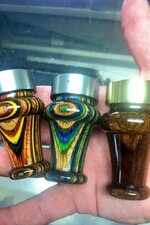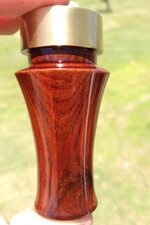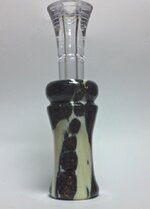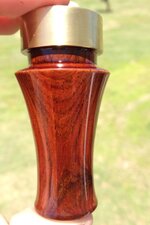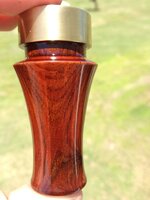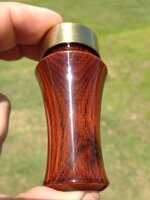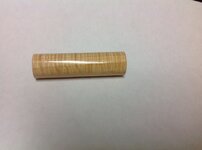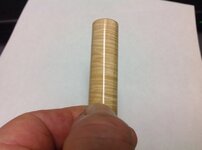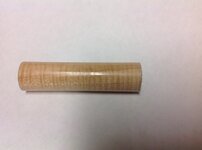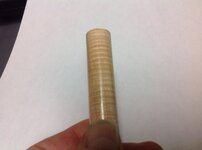Got mine yesterday and gave it a try. I had pretty much stopped using wood for pens because I wanted high gloss (with the superior grain detail / glow of an oil finish), a quick finish and I didn't want to deal with CA/BLO anymore. CC seems like it has potential, but I haven't been able to get the results I'm looking for yet (after only one afternoon's trial). Here's my thoughts after a couple of hours yesterday:
1) On closed grain wood it takes about 10 minutes to get a really high gloss finish on a pen blank sized piece of wood. Most of that time is waiting time, but not enough time to do other things while you wait. 10 seconds application followed by 50 seconds of waiting...repeat 8 to 10 times.
2) On open grain wood, CC will not fill open grain. I do not like high gloss finishes over unfilled grain where the unfilled grain (or other things that lead to a less than flawless gloss finish (e.g. tear out, tool marks, sanding marks...)) leave a "broken" plastic looking finish. With CA, it was easy to QUICKLY fill open grain in a number of different ways. While there are many ways to fill grain before application of CC, none of them are as quick as CA. Sanding in the first coat of CC is not a good way to fill grain (unless maybe you wait a whole lot longer than I did before the second coat). I intend to play around with this some more to see if I can find a way to speed up the grain filling process.
3) I like the way wood grain "pops" with the application of an oil finish (e.g. BLO / CA). I also like the ambering an oil finish gives to lighter colored woods. CC doesn't "pop" the grain. On light woods, it doesn't show anywhere near the ambering of a BLO/CA finish. CC on lighter woods look lifeless and pale to me. It looks pretty good on darker woods, especially those that usually really (over) darken up with oil.
Trying to get a better look on lighter wood, I gave a blank a quick friction application of BLO. Then applied the CC. The CC did not adhere well to the BLO treated blank (their instructions clearly state the blank must be clean with no oils or such, but I had to try anyway). CC did adhere well to oily wood (teak and rosewoods) that were wiped with DNA before application.
Application of shellac as a base coat is pretty common with water based finishes. I did a few trials with shellac, and it seems like it might be able to significantly improve the look of CC with lighter woods (in my opinion anyway). I also have some "ambering" dyes that I used when I sprayed my turnings with water based lacquer. I plan to test those with the CC as well to see if I can get closer to the look I want in lighter woods. I'm optimistic.
4) I didn't detect any smell with CC. I didn't have any noticeable reaction after working with it for a couple of hours. I did read the MSDS which sounded dire in places, but no worse than most of the other finishing products (and resins) that I work with every day.
I wasn't happy enough with any of the test blanks to spend time taking pictures. I turned off the finishes to get them ready for the next round of testing.
More results later....
Ed

